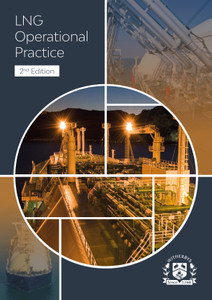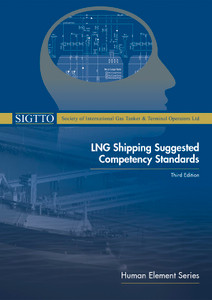
These guidelines provide recommendations for the responsibilities, procedures and equipment required for LNG bunkering operations. They set harmonised minimum baseline recommendations for bunkering risk assessment, equipment and operations.
These guidelines define and cover the additional risks associated with bunkering LNG and propose a methodology to deal with those additional risks, in order to provide a similar level of safety as that which exists for traditional oil fuel bunkering operations.
They are designed to complement and expand on existing regulations and guidelines. In particular, the following topics are addressed:
- The responsibility of different parties involved in the LNG transfer
- the LNG bunkering process
- SIMOPS
- safety distances
- QRA and HAZID.
LNG bunkering is developing worldwide in line with the increase of use of natural gas as a fuel compliant with environmental legislation.
This guideline provides recommendations for the responsibilities, procedures and equipment required for LNG bunkering operations and sets harmonised minimum baseline recommendations for bunkering risk assessment, equipment and operations.
These guidelines do not consider commercial aspects of the bunker transfer such as Bunker Delivery Notes and measurement of quantity or quality of LNG.
Chapter 1: General
Section 1: Application
Section 2: Definitions, Applicable Standards and Rules
Section 3: Bunkering Methods
Section 4: Responsibilities During LNG Bunkering
Section 5: Technical Requirements for Bunkering Systems
?
Chapter 2: Risk Assessment
Section 1: LNG Bunkering Operations Risk Assessment
Section 2: Safety and Security Zones
Chapter 3: Functional and General Requirements for LNG Bunkering Operation
Section 1: Pre-bunkering Phase
Section 2: Bunkering Phase
Section 3: Bunkering Completion Phase
Annex: Guidance on HAZID and HAZOP for LNG Bunkering Operations
Section 1: HAZID for LNG Bunkering
Section 2: HAZOP for LNG Bunkering Operations
Dedicated to safe ships and clean seas, IACS makes a unique contribution to maritime safety and regulation through technical support, compliance verification and research development. More than 90% of the world’s cargo carrying tonnage is covered by the classification design, construction and through-life compliance rules and standards set but the twelve Members Societies of IACS.
IACS is a not for profit membership organisation of classification societies that establish minimum technical standards and requirements that address maritime safety and environmental protection and ensures their consistent application. It carries out this responsibility through its panels, expert groups and project teams and provides a Quality System Certification Scheme (QSCS) that its Members comply with, as an assurance of professional integrity and maintenance of high professional standards. IACS is recognized as the principle technical advisor of IMO.
- Number of Pages:
- 125
- ISBN:
- 9781856097543
- Published Date:
- November 2017
- Binding Format:
- Paperback
- Book Height:
- 235 mm
- Book Width:
- 155 mm
- Weight:
- 0.6 kg
- Author:
IACS
- Preview:
- Yes





